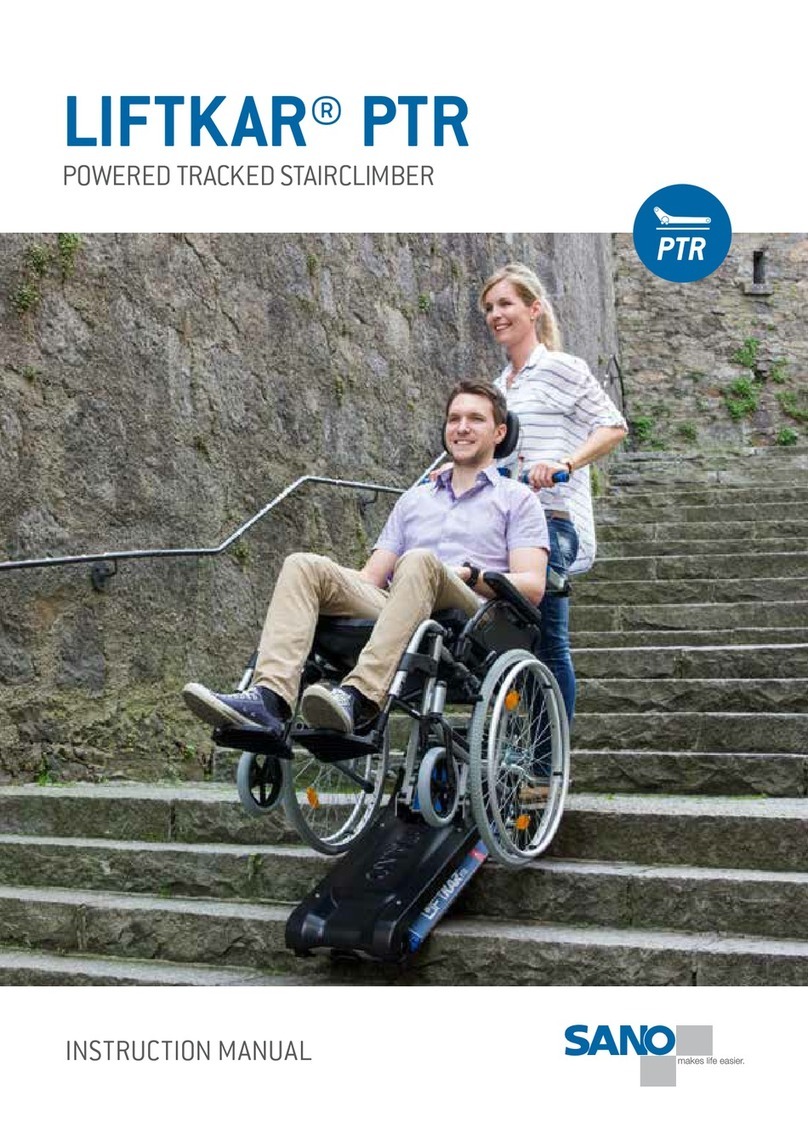
NEO Liftkar SAL I 2
INTRODUCTION 3 .....................................................................................................................................................................
1 SAFETY GUIDELINES / TECHNICAL DATA 3 ........................................................................................................................
1.1 General safety guidelines 3 ............................................................................................................................................
1.2 Technical data of the LIFTKAR SAL 4 ..............................................................................................................................
1.3 Technical data for Lithium quick-change battery pack 4 ...............................................................................................
2 CONTROLS 5 ..........................................................................................................................................................................
2.1 Model ERGO 5 ................................................................................................................................................................
2.2 Model UNI 6 ....................................................................................................................................................................
2.3 Model FOLD 7 .................................................................................................................................................................
2.4 Model FOLD-L 8 ..............................................................................................................................................................
2.5 The swivel joint (FOLD / FOLD-L) 9 .................................................................................................................................
2.6 Control unit 9 .................................................................................................................................................................
2.7 Charging status indicator 10 ..........................................................................................................................................
2.8 Ascend button in upper handle 11 .................................................................................................................................
2.9 Safety flap 11 .................................................................................................................................................................
2.10 Switching off 11 ...........................................................................................................................................................
3 FITTING AND REMOVING THE BATTERY 12 .......................................................................................................................
3.1 Fitting the battery 12 .....................................................................................................................................................
3.2 Removing the battery 12 ...............................................................................................................................................
4 OPERATION 13 ......................................................................................................................................................................
4.1 Ascending stairs 13 ........................................................................................................................................................
4.2 Descending stairs 13 ......................................................................................................................................................
4.3 Please pay attention to 15 .............................................................................................................................................
5 CHARGING THE BATTERY 16 ...............................................................................................................................................
5.1 Battery charger 17 .........................................................................................................................................................
6 ACCESSORIES AND OPTIONS 18 .........................................................................................................................................
7 DISPOSAL 19 .........................................................................................................................................................................
8 WARRANTY AND LIABILITY 19 ............................................................................................................................................
8.1 Warranty 19 ...................................................................................................................................................................
8.2 Liability 20 .....................................................................................................................................................................
9 CE DECLARATION OF CONFORMITY / DESIGN PROTECTION BY PATENTS 20 ..............................................................
CONTACT 24 ..............................................................................................................................................................................





























